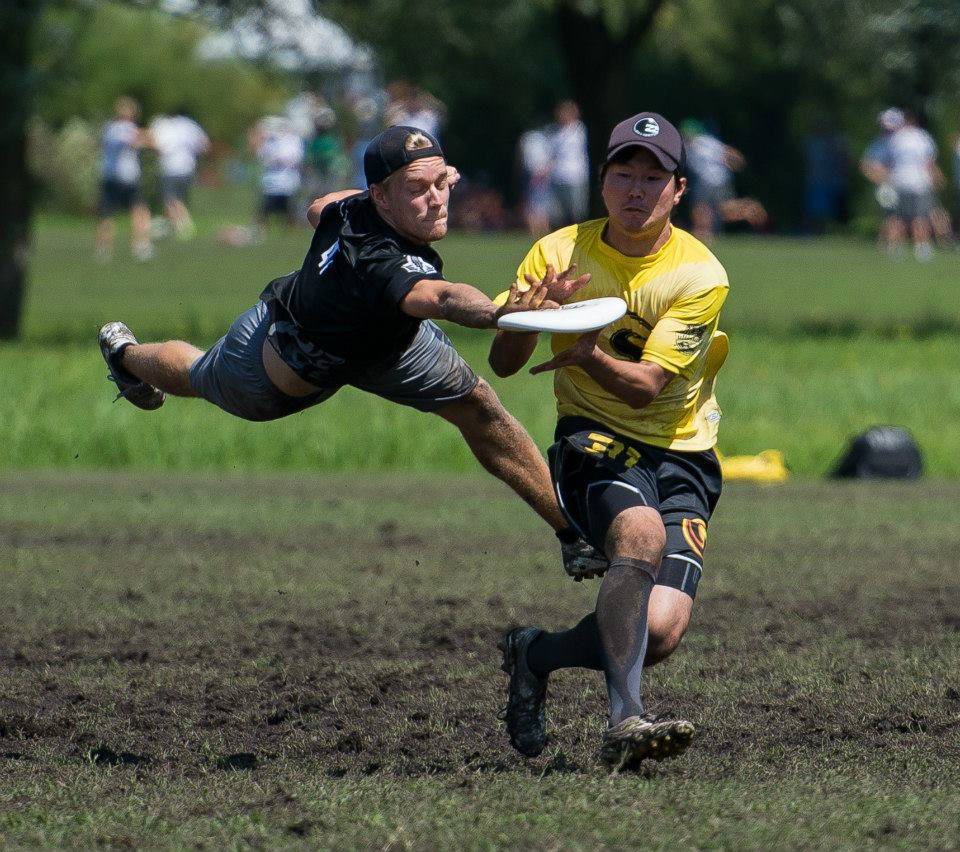“The challenge with recording history is that some details are not known to be important until the future. Subtleties of historical moments are at risk of being lost unless witnessed and documented by the people who were there.”
Most online sites documenting the origins of ultimate frisbee lack historical context. Even official sites fail to provide a comprehensive overview of all the events that led to the discovery of this sport. Many ultimate and disc sports websites give only a brief account, crediting Joel Silver for introducing the sport at Columbia High School. A few websites also acknowledge that Silver learned the game from Jared Kass while attending a prep school summer camp.
This article updates the historical record and provides additional information and context on the contributions made by Jared Kass, Joel Silver, Appleseeds, and early disc sports pioneers. It explores the evolution of Frisbee football, from a simple pastime with a flying toy to a globally popular sport played by skilled disc athletes. The article features significant events, promoters, and players who shaped and shared the pioneering moments in the early days of disc sports.
Freestyle Play and Early Disc Sports.
“Freestyle is the mother of all disc sports.”
Starting from the mid-1960s, the original playing instructions for the Frisbee have been inscribed on the back. “PLAY CATCH and EXPERIMENT” with different throwing and catching techniques. These instructions date back to the invention of the flying disc in the 1950s and were the instructions for the first Frisbee play. This began what we now know as freestyle and predates all modern disc sports.
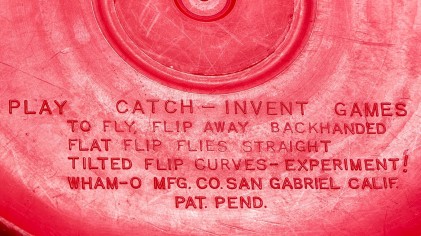 This instruction led to the development of freestyle, and the first form of Frisbee play. Although it wasn’t called “freestyle” until the 1970s, throw-and-catch Frisbee freestyle was the original flying disc play. Back then, it was called “playing frisbee.” The roots of all modern disc sports can be traced back to the history of Frisbee freestyle, which began in the 1950s.
This instruction led to the development of freestyle, and the first form of Frisbee play. Although it wasn’t called “freestyle” until the 1970s, throw-and-catch Frisbee freestyle was the original flying disc play. Back then, it was called “playing frisbee.” The roots of all modern disc sports can be traced back to the history of Frisbee freestyle, which began in the 1950s.
Guts Frisbee, disc golf, and ultimate frisbee have all borrowed the playing formats from traditional ball sports, replacing the ball with a flying disc. These flying disc sports provide an enjoyable experience for players of all skill levels. On the other hand, freestyling requires a unique set of skills, including throwing and catching challenges that players set for themselves. Freestyle was considered the most challenging discipline of disc handling.
“Because today’s style of freestyle play focuses mostly on the nail delay move, freestyle doesn’t get the throwing legacy it deserves.”
Freestyle produced most of frisbee’s first excellent disc athletes. Every disc sport, including ultimate, uses what was initially known as freestyle throwing techniques. When freestylers began playing other disc sports, like ultimate, they brought all their freestyle throwing techniques.
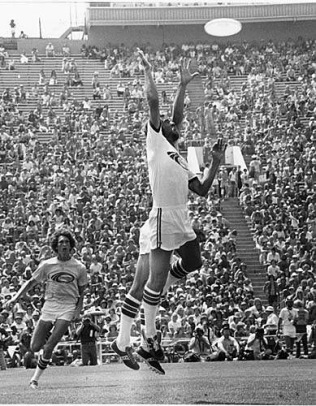
“Ultimate is a game of passing, consisting of throwing techniques created and developed by early freestylers before modern disc sports.”
Freestyle play in the 1960s, and freestyle competitions, through the 1970s, were the popular events and main attractions for the early tournaments.
During the 1960s and early 1970s, before the nail delay, freestylers, known for their throwing abilities, were at the forefront of the emerging disc sports scene. Ultimate frisbee was gaining popularity, however, it was difficult to assemble teams with fully skilled players who could execute advanced throws. Fortunately, freestylers brought their extensive throwing techniques to ultimate frisbee, making them excellent handlers.
Frisbee Football.
“The Frisbee was invented in the 1950s and gained popularity as a recreation in the 1960s. As players developed their throwing skills, it became obvious that former ball athletes would choose to replace the ball in various sports with the newly invented flying disc.”
like Tin Lid Golf played in Canada (1926), there are recorded accounts of ultimate-like games played with metal pans and other flying items since the mid-1900s, much earlier than our recent historical records.
Frisbee football (a version of American football played with a flying disc) is recorded as the origin of many games similar to ultimate (Johnson, 1975; Malafronte, 1998; Zagoria, 2003). Accounts of such games are recorded at institutions such as Kenyon College, Ohio as early as 1942. A version of such a game, called Aceball, was later captured by Life magazine in 1950 (Malafronte, 1998). – The Sports Journal.
Evidence of another similar game, involving “a plastic or metal serving tray” cropped up at Amherst College in the early 1950s. In a letter to the editor, published in the January 1958 Amherst Alumni News, Peter Schrag (alumni from 1953) describes this game, stating that: “Rules have sprung up and although they vary, the game as now played is something like touch (football), each team trying to score goals by passing the tray downfield. There are interceptions and I believe passing is unlimited. Thus, a man may throw the Frisbee to a receiver who passes it to still another man. The opponents try to take over, either by blocking the tray or intercepting it.” – (Leonardo & Zagoria, 2004,5).

In the US and Canada, ball-minded athletes began playing recreational ball sports with a flying disc. One such game was frisbee football. It appears that ultimate, in some variation, was destined to become a popular disc sport. This wasn’t surprising considering that ultimate play shares similarities with various well-established ball sports. The only thing that sets it apart is the flying plastic disc, which flies much better than a ball or metal tray.
Frisbee Football/Ultimate.
“Joel Silver and his classmates at Columbia did not invent Frisbee football, but in writing the first set of rules, provided the foundation to begin developing a modern flying disc sport.”
Joel Silver inventing ultimate frisbee, has been accepted history by most official disc sports organizations. The Willie Herndon interview with Joel Silver and Jared Kass found that story somewhat different. Willie Herndon and The Sports Journal have updated that history.
The Sports Journal – “For years it was thought that Joel Silver and fellow students at CHS invented ultimate frisbee, however, more recent and rigorous research has come to light to suggest that the truth may be somewhat different. Silver and his friends did much to record the rules and move the sport to the public and eventual popularity. According to Willie Herndon (2003), after interviewing Silver and Kass, it was found that Silver had learned a Frisbee game from someone named Jared Kass while attending summer camp. Herndon (2003), like many, assumed that Silver had played something like frisbee football with Jared Kass at camp and then returned to Columbia High School in Maplewood, New Jersey, and made up and named, a whole new game called ultimate. However, upon questioning Kass closely it seems that the whole of the ultimate playing world had been somewhat misled. Upon investigation, Herndon (2003) learned that Kass had taught Silver not some distant relative of ultimate, but ultimate in its essence and by name while having no idea that he had had anything to do with its creation. Kass recounts that the game evolved from a variation of touch football while at Amherst College where he started as a student in 1965.” ——–Gerald Griggs – The Sports Journal’
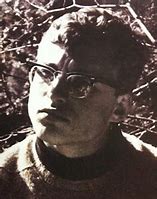
In 1966, Jared Kass and fellow Amherst students, like other groups across North America, evolved a team frisbee game based on American football, basketball, and soccer concepts. This game had some of the basics of modern ultimate including scoring by passing over a goal line, advancing the disc by passing, no traveling with the disc, and turnovers on an interception or incomplete pass. Jared Kass, an instructor and, dorm advisor, taught this game to high school student Joel Silver during the summer of 1967 at Mount Hermon Prep school summer camp. Joel Silver, and fellow students Jonny Hines, Buzzy Hellring, and others at Columbia High School, further developed Frisbee football with a new name and a written set of Ultimate Frisbee Rules. Their first game was played at CHS in 1968 between the student council and the student newspaper staff. Members of the school paper had been tossing a Frisbee during their lunch, and in the spring, members of the student council and the paper started playing frisbee football with a black 150-gram, Wham-O Master Tournament Model. The people who made up the team were part of what made the sport so unique. “It was a chance for The Columbian (the school paper) core – the intelligentsia and non-athletes of the school – to play a sport,” says Silver. Many of the players were excellent students headed to Ivy League schools. According to Ed Summers, one of the original players, there was also a good representation of stoners. Summers said, “The core of us were largely among the better students. There were also some druggie types. We were about evenly split between the better students and the half who smoked dope.” Evening games were played in the glow of mercury-vapor lights at the school’s student-designated parking lot.
An Accident, That Was A Sport Just Waiting To Happen.
“As a joke one day — because it was a kind of counterculture time — I had raised my hand in my student council and I say, ‘I’d like to move that we have a committee to investigate the possibility of bringing frisbee into the high school curriculum. I mean, it was a joke.” – Joel Silver

When Jared Kass introduced Joel Silver to his frisbee game, he wasn’t introducing his idea of a sport, he was introducing a new fun camp activity. When Joel Silver introduced the game, he learned from Kass to students at CHS, it was more of a counterculture-inspired amusement and anti-sports joke than the beginnings of a new disc sport. Many new ideas and concepts begin as accidents and become more than originally intended. It’s easy to see the personal abilities that Jared Kass and Joel Silver each had that were necessary to advance the version of frisbee football they called ultimate. Jared explains in his interview with Herndon that before this interview (2003), he had no idea that the game of ultimate he was seeing began with him at his camp. Kass explains: “Did I understand that I had something to do with creating this game called Ultimate? I didn’t understand that at all. I’ve always thought it was kind of nifty – I knew that our gang must have been in the early days of playing, but I just assumed that it must have popped up in 20 or 40 different places and slowly took shape.” Frisbee football did pop up in 20 or 40 different places. Jared’s camp version evolved into today’s ultimate, because it was taught to Joel Silver. Jared Kass was a creative camp instructor and an athlete, with prior experience in other sports. Like many in the 1960s, Jared liked playing with a flying disc and introduced this ball-like flying disc athletic activity to his camp. This version of frisbee football was destined to move beyond Kass and his camp because it was taught to Silver. Joel Silver was a popular student in a position to present the game to his school.
1997 Joel Silver video interview by Willie Herndon. In this interview, Joel talks about learning the game from Jared Kass. It is clear that Joel wasn’t an athlete or an active frisbee player and was not as convinced of the potential in this new frisbee game as his friends were. What is also clear from the interview is that Silver’s social leadership skills played a crucial role in making this happen for his school. Joel Silver, Buzzy Hellring, and CHS classmate’s contributions were to write the words that would define and standardize ultimate frisbee with a set of playing rules on paper for the first time. Original Rules for Ultimate.
Silver was not acquainted with frisbee or its potential as a sport. Nonetheless, his contribution to the first set of written rules was significant. It marked the beginning of a structured new sport that, until then, was just a ball-like sport played recreationally with a Frisbee. Silver, realizing his actual contribution to ultimate, humbly stated, “I like to say we developed it.” – Sludge Output. Without this chance meeting of Kass and Silver, their version of frisbee football we know today as ultimate doesn’t begin at Mount Hermon Prep School summer camp and Columbia High School in New Jersey.
The Ultimate Experience.
“He was not bone and feather but a perfect idea of freedom and flight, limited by nothing at all.” – Jonathan Livingston Seagull.
In several places in his interview with Herndon, Jared Kass explains the feeling he gets while throwing and catching a flying disc. ” I leaped up and said, this is the ultimate and felt and experienced it,” – Jared Kass.

Kass’s ultimate experience is the mental flying sensation players experience when throwing and catching a flying disc. People frequently dream that they are flying, no one ever dreams of rolling or bouncing around like a ball.
Even at a championship level, ultimate is still centered around the act of playing. Along with a set of rules and competitive scoring, every disc sport incorporates this unique playing experience. This sensation while playing with a flying disc was experienced by the earliest disc athletes and remains a primary motivation for players today.
What’s In A Name – The Ultimate Game.
The origin of the name ultimate from the 2003 Willy Herndon interview with Jared Kass.
Herndon: “It seems that, without realizing it, you named the sport of Ultimate. How did that happen?”
Kass: “What I do remember – and this piece I do remember clearly – I just remember one time running for a pass and leaping up in the air and just feeling the Frisbee making it into my hand and feeling the perfect synchrony and the joy of the moment, and as I landed I said to myself, “This is the ultimate game, this is the ultimate game.”
Herndon: “But did you later name this game Ultimate Frisbee?”
Kass: “Yes, it was when I was at Northfield Mount Herman. I can remember the moment clearly, but I can’t identify the exact date or time. [Jared Kass worked there in the summer of 1968, at age 21, between his junior and senior years at Amherst.] This was really the first time in my life I was a teacher in an official capacity. I was an assistant teacher in a creative writing program, and I was a dorm counselor for a bunch of guys. We lived on a floor together, and that’s the matrix, the context in which the thing developed. I think I was probably trying to entice the guys. I felt that they just needed some new kind of energy, so I said, “Hey guys, have you ever played ultimate?”
Herndon: “Wait, this is a memory?”
Kass: “Yes… I think the teacher in me came out in that moment, and I understood that I needed to say something that sounded confusing, and flashy to these high school kids who were all over the place in terms of who they were.”
After his interview with Kass and Silver, Herndon concluded: “The sport was conceived at Amherst, its DNA more or less complete, gestated at Northfield Mount Hermon, and birthed at Columbia High School. From this point of view, it seems accurate to say that the “Amherst Group” invented ultimate.” – Willie Herndon, interview in 2003
During interview conversations with both Jared Kass and Joel Silver, advanced the idea that the name “ultimate” applied to Jared’s Frisbee game began with Jared himself. In the 2003 Willie Herndon interview with Jared Kass, Jared stated that he thought the game was “the ultimate,” when playing and remembered calling it “the ultimate game,“ when trying to recruit new players. “This is the ultimate game,” might have been heard by Silver while learning the game from Kass at summer camp. Silver and Kass independently using the word ultimate in referring to the game is unlikely. It’s possible that after referring to the Frisbee game as a “joke,” Silver may have been using the name ultimate with continued anti-sport sarcasm. The truth probably lies somewhere in the middle. During the Herndon/Joel Silver interview, Silver didn’t discount the possibility that he may have heard Kass use the word ultimate and maybe did or didn’t consciously realize it when naming the game on the first set of written rules.
Joel Silver is credited for naming the game “ultimate” in the initial rules, but Jared Kass may have assisted. Jared’s initial description of the “ultimate game” was anything but a joke. Even then, Jared expressed the same enthusiasm that today’s ultimate players have for their sport.
Johnny Appleseeds and Ultimate’s First Disc Athletes
“Ultimate wasn’t invented, it was discovered and then defined.”
Joel Silver and his peers were not involved in sports or the counterculture movement. They were exemplary students who, after graduation, had plans to attend Ivy League universities for successful careers. While they did participate in a Frisbee game during camp and high school, neither Silver nor Kass competed in ultimate, or any other disc sports outside of those settings. Following their graduation from CHS, Silver pursued a career in the movie industry in Hollywood. Despite their different paths, Kass, Silver, and the Johnny Appleseeds all played a role in introducing and advancing ultimate frisbee.
As previously stated, today’s ultimate may have never left Jared Kass and his summer camp recreation if Joel Silver had not brought the game to his high school. By that same logic, ultimate may never have left Columbia High School had it not been for the effort of a few determined Columbia and other New Jersey High School graduates called Johnny Appleseeds. This group, known as Appleseeds, introduced their ultimate version of Frisbee football to their respective colleges and to the disc sports community. In the mid-1970s, disc sports athletes, tournament directors, and promoters across the United States and Canada accepted and began promoting ultimate as an official disc sport.
In 1975, Ultimate was introduced at the Major Disc Sports Tournaments in the U.S. and Canada.
“Ultimate doesn’t build character, it reveals it.”

In 1975, with the efforts of ultimate’s Appleseeds, and other disc athletes, ultimate was included as an exhibition at the first major disc sports multi-event tournaments. The Octad, New Brunswick, New Jersey, the American Flying Disc Open (AFDO), Rochester, NY, the World Frisbee Championships (WFC), Pasadena, California, and ultimate’s first international appearance at the Canadian Open Frisbee Championships in Toronto and Vancouver BC. Ultimate frisbee was readily accepted by the budding disc sports community. – History of Ultimate Frisbee in Canada.
In the late 1970s, the first ultimate leagues appeared in the U.S. and Canada. The Mercer County Ultimate League, New Jersey, the Northern California Ultimate Frisbee League, and the Toronto Ultimate Club. The Mercer County and Toronto Ultimate leagues, with hundreds of teams playing year-round, continue today.
In December 1979, the first national player-run ultimate organization was founded in the United States as the Ultimate Players Association (UPA), Tom Kennedy was elected as its first director.
Origin of Spirit of the Game.
“An ultimate game has many moments to be won or lost. The final score at the end of the game is only one of those moments.”
Back in the early days of Frisbee play and the beginning of disc sports, the community of the first disc athletes considered themselves members of a Frisbee Family. The spirit of competition, known today as Spirit of the Game, began with these alternative disc athletes and their playing community. Just like the sport of ultimate, Spirit of the Game was not created but rather uncovered and subsequently characterized.
“Having referees leads to testing the limits, but when it comes to matters of one’s honor, it becomes a different story.”
 Before the emergence of disc sports, Frisbees were primarily used for recreational purposes – to watch them glide through the air was a source of excitement. This simple pleasure became the foundation for all disc-related activities. In the 1960s, frisbee became a non-competitive athletic pastime well-suited to the counterculture. People experimented with freestyle throws and catching techniques, that shaped their attitudes towards frisbee competitions and their overall playing spirit.
Before the emergence of disc sports, Frisbees were primarily used for recreational purposes – to watch them glide through the air was a source of excitement. This simple pleasure became the foundation for all disc-related activities. In the 1960s, frisbee became a non-competitive athletic pastime well-suited to the counterculture. People experimented with freestyle throws and catching techniques, that shaped their attitudes towards frisbee competitions and their overall playing spirit.
The original rules for ultimate, written by Joel Silver and classmates at CHS, make no mention of Spirit of the Game. In fact, their rules did call for the use of referees, “A referee or referees may officiate, and if so, their decision must be final.” – CHS Original Ultimate Rules. Not being athletes themselves, with a limited perspective on competition in sports, referees were naturally included in their rules.
“Spirit of the Game concept did not originate with students at Columbia High School. SOTG evolved later as a preferred competitive concept by the alternative disc sports community. It was an unconscious attitude that reflected a period of cultural change.”
During an interview conducted by Willie Herndon, Joel Silver when asked about the concept of Spirit of the Game, it became clear that he was unsure of its origins and meaning. In the early days of ultimate frisbee, the students at CHS were not athletes or of the counterculture. As seen in early films, they were just learning basic throwing and catching skills. Like kids playing recreational ball sports on the street or in parks, referees were not necessary.
“The Spirit of the Game (SOTG) emerged organically in the alternative disc sports community.”
In the 1970s, alternative disc athletes, participating in various disc sports were primarily about enjoyment of the game. While they played with skills, they didn’t resort to aggressive tactics. In ultimate, Spirit of the Game held more significance as a representation of an alternative approach to traditional sports competitions embraced by the first alternative disc athletes than a reflection of the game itself.
“SOTG is not a hard and fast rule with penalties for non-compliance. It’s a playing philosophy commitment by a player to present and expect a spirit of honesty and mutual respect every time they take to the field.”
Referees were used at the first intercollegiate game of Ultimate Frisbee between Rutgers University and Princeton University. Rutgers University won the game with a score of 29 to 27. The game took place on November 6, 1972, and was attended by 1,000 fans. The Johnny Appleseeds, some of whom played in this first intercollegiate game, were a group of ultimate frisbee players who became skilled disc athletes after graduating from Columbia High School and other New Jersey High Schools. While the Spirit of the Game philosophy was not in the original playing rules, some of the Appleseeds joined the national disc sports community in the 1970s, and with alternative disc athletes, promoted ultimate and helped to establish this spirit of self-regulating conduct in competition.
“Every play you make, every call you initiate or counter, showcases your integrity and character as both a player and an individual. Regardless of its immediate significance or your desire for it to benefit your team, your actions are observed by all those present. These moments are how you will be judged and remembered by others as to how you played the game, and when under moments of intense game pressure, you measured up.”
During the 1970s, the concept of Spirit of the Game having been present in competitive play for some time, was finally recognized, named, and added to the 1978 Official Rules for Ultimate.
1990s – SOTG Growing Pains.
In the 1990s, Ultimate frisbee grew in popularity, attracting new players who were not members of a counterculture with alternative views.
This raised concerns about whether the Spirit of the Game (SOTG) could survive in a more competitive environment. Players were questioning whether SOTG was necessary, they argued that it was causing players to hold back and not play to their full winning competitive potential. Additionally, some top-level teams were not only not adhering to SOTG but were taking advantage of the teams with players that were. These new teams comprised athletes who grew up in traditional competitive ball sports and were taught to win at any cost. However, after the 90s crossroads, as younger players took over and SOTG became more widely publicized as what made ultimate special, players and ultimate programs started to prioritize it more. SOTG has survived the 90s and has become even more popular today. What began as an unscripted counterculture frisbee play influence in the 1960s and 70s has become one of the most crucial aspects of ultimate frisbee. Despite sharing the field with referees in today’s semi-pro leagues, SOTG has survived. However, its true test will come when big money and professional careers are at stake.
Discraft Ultra-Star – Official Ultimate Disc.
“A modest pioneer in a sometimes flamboyant industry, Jim Kenner has proven himself to be a brilliant innovator in pursuit of flying disc excellence.”
Jim Kenner began playing frisbee with Ken Westerfield in the 1960s and is a pioneer for all disc sports. In the early 1970s, Jim organized disc sports competitions and performed in cross-country frisbee show tours. As tournament co-director, Jim introduced early disc sports like freestyle, ultimate, and disc golf at the Canadian Open Frisbee Championships in Toronto and Vancouver, BC. These two tournaments were among the earliest events on the tournament trail for the first disc athletes, marking the beginning of modern disc sports.
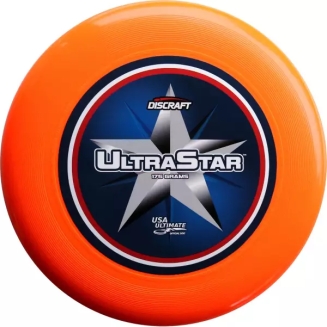 Discraft was founded in the late 1970s by Jim Kenner and Gail McColl in London, Ontario, Canada. Jim and Gail made a few initial runs of their new Sport Disc and held several disc sports tournaments in London before moving the company from Canada to its present location in Wixom, Michigan. Discraft introduced flying discs for every disc sport, including the Ultra-Star 175-gram disc in 1981, with an updated mold in 1983. This disc was adopted as the standard for ultimate during the 1980s. In 1991 the Ultra-Star was specified as the official disc for UPA tournament play. In 2011, the Discraft Ultra-Star and Jim Kenner were inducted into the USA Ultimate Hall of Fame for Special Merit.
Discraft was founded in the late 1970s by Jim Kenner and Gail McColl in London, Ontario, Canada. Jim and Gail made a few initial runs of their new Sport Disc and held several disc sports tournaments in London before moving the company from Canada to its present location in Wixom, Michigan. Discraft introduced flying discs for every disc sport, including the Ultra-Star 175-gram disc in 1981, with an updated mold in 1983. This disc was adopted as the standard for ultimate during the 1980s. In 1991 the Ultra-Star was specified as the official disc for UPA tournament play. In 2011, the Discraft Ultra-Star and Jim Kenner were inducted into the USA Ultimate Hall of Fame for Special Merit.
Timeline of Notable Events in Ultimate History
Before 1966 and into the 1970s, ultimate-like games called frisbee football, are played with the flying disc by ball-minded athletes.
1966– Jared Kass and fellow Amherst students play a Frisbee game that would later be called ultimate.
1968–Jared Kass teaches his Frisbee game to Joel Silver at Northfield Mount Hermon School summer camp.
1969–Joel Silver brings this Frisbee game to the students at CHS. The first game is played between the student council and the school newspaper staff.
1970–First set of written rules and documented use of the name, Ultimate Frisbee.
1970–New Jersey high school graduates called Johnny Appleseeds begin organizing and promoting games of ultimate at their respective universities.
1971–CHS vs Millburn. First interscholastic game.
1972–First intercollegiate game.
1975–Ultimate is introduced at the three major multi-event Frisbee tournaments. Octad, AFDO, and Canadian Open.
1975–World Frisbee Championships at the Rose Bowl. This event introduced ultimate on the West Coast of the US.
1975–Ultimate frisbee makes its first international appearance at the Canadian Open Frisbee Championships, Toronto.
1977–Mercer County Ultimate League (New Jersey).
1977–Northern California Ultimate Frisbee League (NCUFL).
1978–Discraft began manufacturing sports discs in London, Ontario, Canada. The Sky-Styler for freestyle and the Ultra-Star is introduced to ultimate play in 1981.
1978-Spirit of the Game is defined and included in the 7th edition of the 1978 Official Rules for Ultimate.
1979–The Ultimate Players Association is formed. Renamed USA Ultimate in 2010.
1979–The Toronto Ultimate Club (TUC). The first ultimate league in Canada.
1979–The UPA organized regional tournaments and crowned a national champion every year. Glassboro State College defeated the Santa Barbara Condors at the first UPA Nationals.
1980–The first European Championship was held in Paris. Finland won.
1981–The European Flying Disc Federation (EFDF) was formed.
1983–The first true World Ultimate Championship was held in Gothenburg, Sweden.
1984–The World Flying Disc Federation (WFDF)
1987–Canadian Ultimate Championships, Ottawa, ON.
1991–The Ultra-Star by Discraft is specified as the official disc for UPA and USA Ultimate.
1991–World Ultimate Championships, Toronto, Ontario, Canada.
1993–The Canadian Ultimate Players Association begins
1993–Ultimate Canada is formed.
2001–Ultimate was included as a medal sport in the World Games in Akita, Japan
2004–Ultimate Hall of Fame–USA Ultimate.
2010–AUDL is formed.
2011–Ultimate Canada Hall of Fame–Ultimate Canada.
2015–The International Olympic Committee (IOC) granted full recognition to the World Flying Disc Federation.
Instruction-Associations-Media:
- Instruction -Performance -Training: Ultimate Frisbee Handling Skills Exercise | Ultimate Frisbee Power Huck and Pull | Ultimate United
- Early freestyle throwing techniques and some new throws that could be used in ultimate Rowan McDonnell’s 80 Ways to Throw a Frisbee.
- Ultimate Players Organizations and media sources: USA Ultimate | Ultimate Canada | WFDF | FrisbeeGuru | Ultimate Rob | Ultimate History in Canada
Next Articles: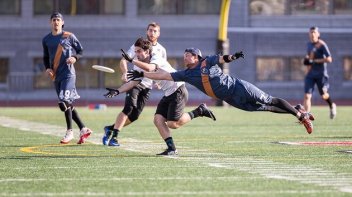
Disc Golf History
Freestyle Frisbee History
Guts Frisbee History
Home page: The History of Disc Sports
Note: This information was referenced and time-lined from disc sport historical and biographical articles including U.S. and Canadian Disc Sports Hall of Fame inductions, Disc Sports Player Federations, and other historical resources. This article was researched, written, and compiled by Frisbee and disc sports historians. The history in this document may change as events and people are added. For more information contact: discsports@hotmail.com
Linking or reproduction in whole or part with properly linked crediting is permitted. discsportshistory.com.
© 2024 Disc Sports History. All rights reserved.
